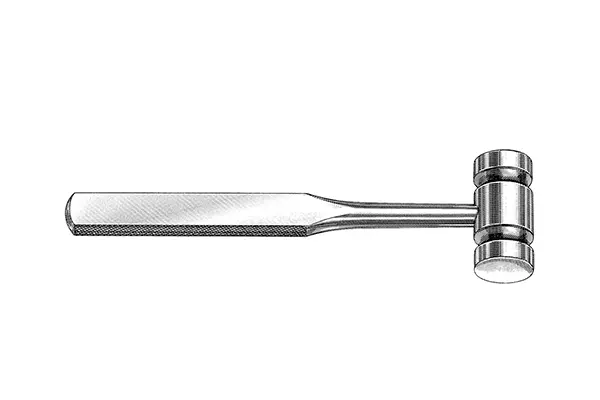Hammer Time: Dethroning the Mystery of Mallets
Let's face it, tools can be confusing, especially when they share similar names and vaguely similar functions. Take hammers and metal mallets, for instance. Both pack a punch, but which one reigns supreme in your toolbox kingdom? Fear not, fellow DIY enthusiast, for we're about to crack the code and reveal the true differences between these percussive powerhouses!
Built for Different Battles:
Imagine a hammer as a burly knight, clad in sturdy steel and wielding a blunt weapon. It's designed for brute force, driving nails, shattering concrete, and generally tackling heavy-duty tasks. Its head, usually made of forged metal, delivers a concentrated blow, perfect for forceful persuasion.
On the other hand, a metal mallet is more like a skilled swordsman, precise and controlled. Its head, crafted from materials like rubber, wood, or even metal (with softer inserts), delivers a less intense impact. Think of it as a gentle nudge compared to the hammer's mighty swing. This makes it ideal for delicate tasks like assembling furniture, chiseling wood, or shaping metal without leaving unsightly dents.
Material Matters:
The materials used in each tool's construction further highlight their distinct roles:
Hammers: Typically made of high-strength steel for maximum durability. They often have a claw on the opposite end for pulling out nails, making them the ultimate demolition duo.
Metal mallets: Their heads come in various materials, each with its own strengths:
Rubber: Ideal for protecting delicate surfaces like wood or tile from scratches and cracks.
Wood: Offers a softer, more controlled impact, perfect for shaping wood or metal without leaving marks.
Metal (with softer inserts): Provides a firmer strike compared to rubber or wood, useful for tasks requiring more force but still gentler than a regular hammer.
The Verdict: Choose Your Weapon Wisely:
So, which one deserves a spot in your toolbox? It depends on your needs!
Hammer: Go for the hammer if you need brute force for demolition, driving nails, or breaking things (responsibly, of course!).
Metal mallet: Opt for the metal mallet for delicate tasks where precision and control are key, like assembling furniture, shaping metal, or working with fragile materials.
Remember, both tools have their place. Think of them as complementary teammates in your DIY endeavors. The hammer tackles the tough jobs, while the metal mallet handles the finesse work. By understanding their strengths and weaknesses, you'll be equipped to conquer any project with confidence!

FAQ:
Q: Can I use a metal mallet instead of a hammer for driving nails?
A: Not generally. While some metal mallets might be able to handle small nails in soft materials, they lack the driving power and concentrated force of a hammer. Using a mallet for nails could damage the mallet and bend the nail without properly driving it in. Stick to the hammer for nail-driving duties!
Post time: 01-31-2024





